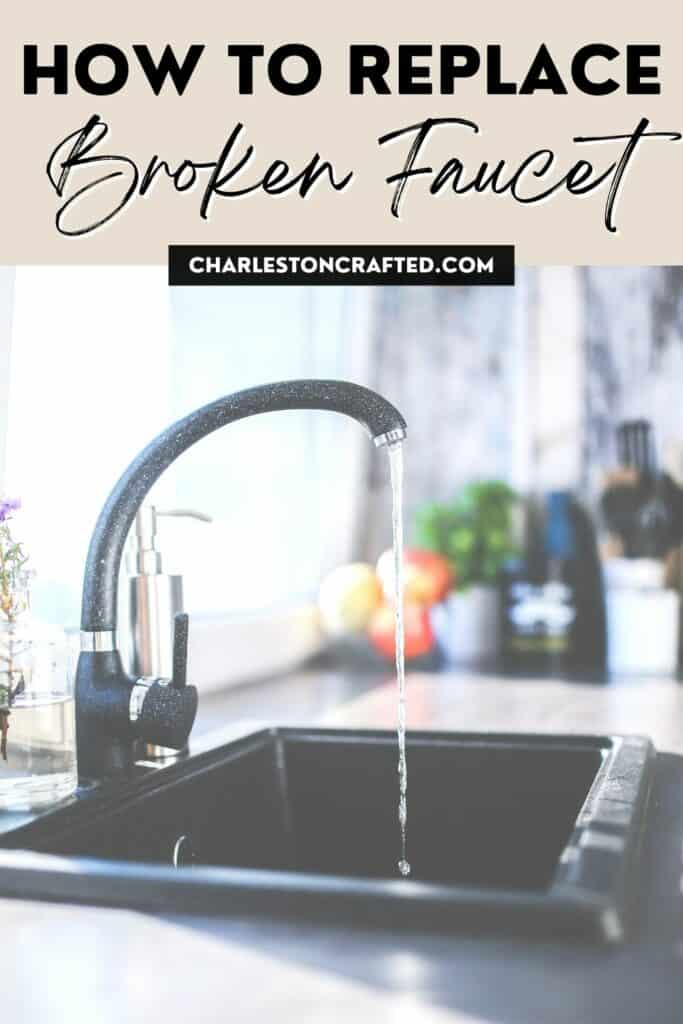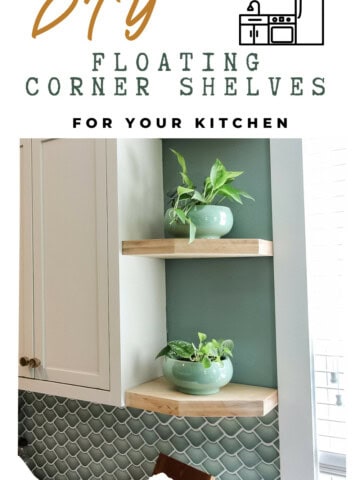Our handy DIY guide shows how to replace a broken faucet step-by-step. Learn to diagnose, fix, and choose the right tools for a quick and safe repair.
Of course, when you move into a new place, there are going to be things you want to fix eventually.
Unfortunately, there are also some things you'll have to fix as soon as possible. Well, we've encountered a couple of those already!
The first, and most annoying, was that Morgan's new kitchen sink was barely working. The kitchen faucet was only dripping a little water out when turned on.
I figured she had a broken sink faucet, but I needed to delve deeper to solve the problem.
Keep reading to learn how to fix your faulty faucet.

Broken Faucet: Diagnosing the Problem
My first thought was that maybe the sprayer was clogged, so I unscrewed it and turned the water on. The water still dripped slowly – so there must be something wrong with the line.
So I went underneath the sink, and detached one end of the main water line. I took it out and through to the basin so I could check if it was clogged and give it a good clean.

Sadly, after screwing it back on, I still hadn't solved the problem!
I then decided to remove the supply line and set up a bucket right next to the water valve. I turned on the water, and it came out at full force.
So at least now I knew that there wasn't a problem with the pipes. I figured there must be something wrong with the faucet – maybe I needed a new one?
So I went under the sink, and as I started to remove the entire faucet, I noticed this:

As you can see, it looks like the water faucet line has been crushed. This is what was blocking the flow of water.
The good news is it wasn't quite a broken tap – meaning it should be a quick fix.
Fitting the New Water Faucet Line
Well, at least I hoped this was the problem. So after a quick trip to Lowe's, I turned into a full-fledged plumber and bought a new water faucet line.
Diving back under the sink, I had a huge problem removing the old line because the adapter was really stuck. With a bit of elbow grease and some WD-40, I did eventually get it off, though.
Looking at the packaging of my new faucet line, I followed the directions and found the correct adapter.

I found the correct adapter and wrapped Teflon tape around the threads. You have to do this tightly and quite carefully – it's to make double-sure there are no water leaks.
It was frustrating, but not too bad. A little trial and error is all you need.

And there you go – what was once a broken kitchen tap now works perfectly!
Broken Water Faucet FAQs
What are the tell-tale signs your faucet needs a little TLC?
You'll know it's time to grab your tools when you have a persistently dripping faucet, hear odd noises, notice the water pressure isn't what it used to be, or see any unsightly water stains or damage around the faucet.
How can you tell if it's a faucet issue or something more with the plumbing?
If it's just one faucet acting up, it's probably the faucet itself.
But if you're seeing problems across multiple fixtures or spotting water damage on your walls, you might be dealing with a bigger plumbing issue.
What tools are needed to fix a water faucet?
You'll want to arm yourself with an adjustable wrench, a couple of trusty screwdrivers, some pliers, and don't forget the Teflon tape.
Depending on your faucet's mood, you might also need a faucet key or a basin wrench, along with any replacement parts specific to your faucet's brand.
Any safety tips before I dive under the sink?
Absolutely! First things first, always shut off your main water supply before messing with any water lines. You should know where your water shutoff valves are. This is to keep your kitchen from turning into a swimming pool if you pull the wrong line.
Also, keep an eye out for any electric power points around your workspace – and be sure to not get them wet. And gloves and goggles are always a good idea.
Want More Home Repair Guides?
Have a look at these home how-to guides:
- Unclogging Your Garbage Disposal
- The Easy Way to Change a Light Fixture
- How to Fix a Screen Door
- Simple Wood Furniture Repair Tips
Looking for something?
We've been doing this since 2012 so we have a LOT of blog posts!
Search stuff like: Ceiling Projects | DIY Plant Stands | Thrift Flips


Hello, I'm Morgan, half of the creative force behind CharlestonCrafted.com! With a passion for DIY that dates back to 2012, I've transformed three homes and now I'm dedicated to helping others craft their dream spaces. Let's turn your house into a home together!






arzea says
Well hey there...